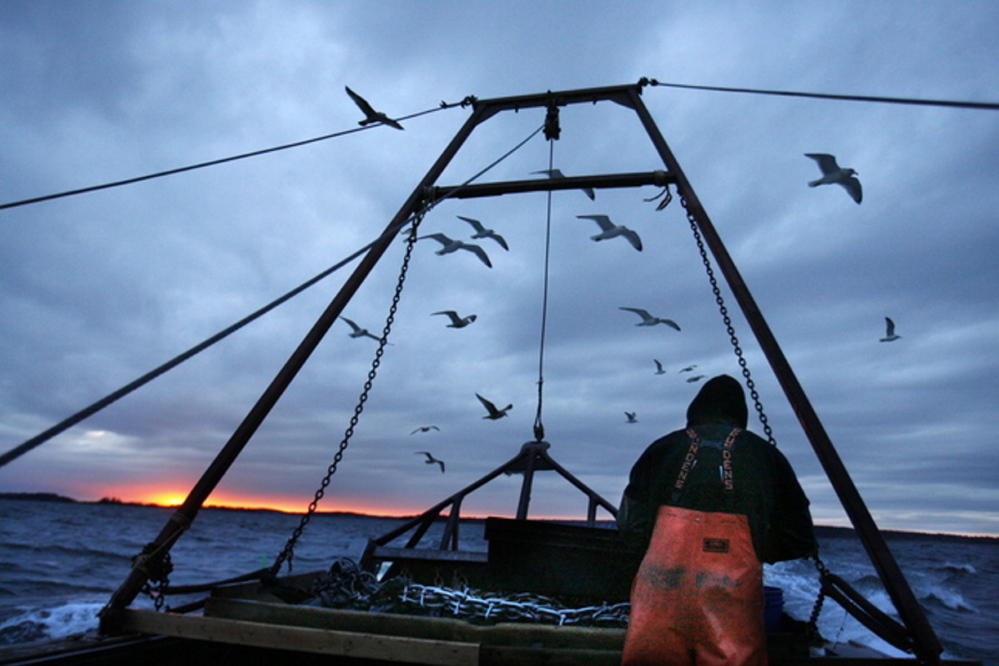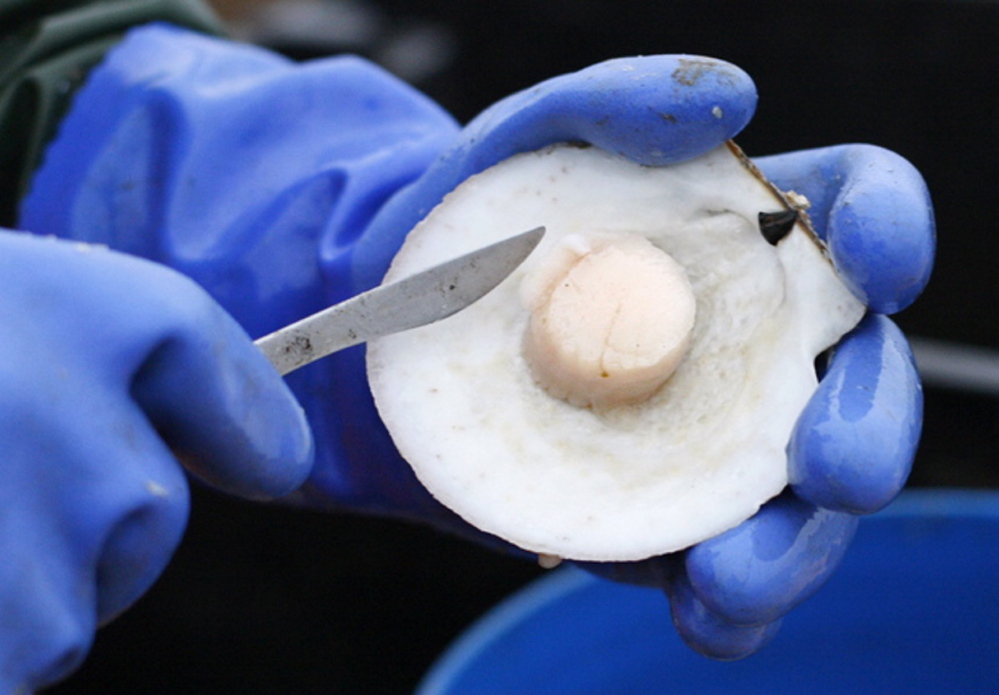Maine’s four-month scallop season that ended in March apparently will be the state’s strongest in years, despite a harsh winter and new regulations unpopular with some fishermen, preliminary data show.
Data for the 2013-14 season, which runs from December to March, are not yet compiled, but a strong December catch suggests season totals will top the 2012-13 haul of 427,080 pounds at a nearly $4.9 million value, said Trisha De Graaf, a spokeswoman for the Maine Department of Marine Resources. The numbers were the highest since the state began compiling seasonal totals in 2008, she said.
The catch for December, typically the strongest month of the year, was 138,450 pounds, up more than 14,000 pounds from December 2012, De Graaf said.
“We’re seeing really positive signs in the fishery,” she said.
By calendar year, the haul for 2013 was 424,547 pounds of scallop meat, the highest total since 2000, state data show. The catch was valued at nearly $5.2 million, the highest figure since 1998, and the 2013 price of $12.24 per pound set a record, according to the department. Maine had 631 commercially licensed scallop harvesters last year.
The figures come during the second season in which the state divided coastal Maine into scallop fishing zones and the second time the state used a rotational management system, in which localized areas in one zone are closed to fishing on a year-to-year basis, which is expected to give the scallop population a chance to replenish. The rotational zone stretches along Maine’s coast, from the Penobscot River to Lubec.
The state also reduced fishermen’s daily scallop meat limits and cut back the number of days people can fish, with the most dramatic cutbacks taking place in scallop-rich Cobscook Bay.
State officials and some fishermen credited the new rules with encouraging a strong haul this season.
The management plan has “definitely aided in the abundance,” said Alex Todd, a scallop fisherman based out of Portland.
But some fishermen remained unconvinced.
Jimmy Wotton, a scallop fisherman out of Friendship, said the regulations caused boat crowding in some places. He described his haul this year as about average.
“Part of the problem with the rotational management plan is that it puts heavy pressure on those areas,” he said.
The tough weather also limited the number of days Wotton could get his boat on the water, he said.
De Graaf said the state developed the management plan to encourage stability, noting a drastic downward trend in scallop harvests into themid-2000s. From the late 1970s to the mid-1990s, the total usually topped 1 million pounds. It bottomed out at about 33,000 pounds in 2005.
Send questions/comments to the editors.




Comments are no longer available on this story